Interviews
Interview: RAVNIKAR GALLERY SPACE
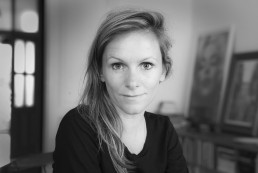
RAVNIKAR GALLERY SPACE may only have existed for one year, but it’s the result of a longtime vision put forward by its founder and director Piera Ravnikar: to bring the spirit of young creativity closer to the public. Following this line of thought, freedom of expression and the responsibility towards the times we live in are all at the forefront of the gallery programme. Despite being based in Slovenia, which she experiences as a sort of vacuum of transition between an old and a new system, she has faith in this moment of time and its potential to foster change. In her own words: “I cannot change the world, but I can influence my micro-environment and hope that this environment in turn has a changing effect on other regions and communities.” We had a talk with Piera Ravnikar and the opportunities and challenges of running a gallery in Ljubljana – a city in growth and an art scene that is finally about to awaken and break new ground.
Name: RAVNIKAR GALLERY SPACE
Founder and Director: Piera Ravnikar
Location: Ljubljana
Opening year: November 14, 2017
When did you first become interested in art, and how did it lead you into the business of being a gallerist?
It’s a rather personal childhood story. I started painting at the Pioneer Home – Centre for Youth Culture in Ljubljana when I was three years old. So small I could barely reach the top of the table, but determined to become a painter. As it happened, I ended up on the other side of the institution’s hallway dancing classical ballet, to which I dedicated my entire youth. However, my desire to paint and draw never left me. In fact, it has stayed with me to this day. I will probably never be an artist, but what remains is my love for visual art. And in order to change things for the better, it’s exactly what one needs in the field of art – love. It was this passion that prompted me to leave my job as an artistic director of the visual, audio-visual and intermedia programme at Kino Šiška – Centre for Urban Culture, where I had spent almost ten years engaged in curating, developing and managing over 1000 cultural and artistic projects. The decision to leave this public institution in the Municipality of Ljubljana wasn’t easy at all, as it represented my entire financial and contextual basis as well as offered a hub of numerous resources that allowed me to realize a number of exceptional international projects. But in the end, my long-time wish to open an independent gallery was simply too powerful, and mustering enough courage to do so before it was too late was indeed the right decision. So, as long as I possess enough energy to build things from scratch – with all the advantages and challenges this entails – I stand on the side of the courage.
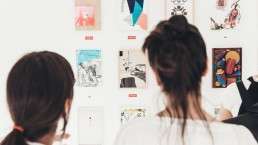
How would you describe the program and vision of RAVNIKAR GALLERY SPACE? What sets your gallery apart?
For symbolic reasons, the gallery resides in the area of the Republic Square designed by the world-renowned Yugoslav architect Edvard Ravnikar, located in the capital’s triangle of culture – between the Academy of Fine Arts and Design, Cankarjev dom (the country’s biggest cultural centre) and the Museum of Modern Art in Ljubljana. It’s purposefully designed to represent both emerging and established artists from surrounding regions. At this point, I can’t help mentioning the fact that my gallery is the only private one of its kind in Ljubljana, and Slovenia for that fact, focused exclusively on the active presentation, promotion and sale of contemporary art production by the young(est) generation of Slovene artists, who already have an array of solo and group exhibitions under their belt, and whose works have been showcased locally and abroad. The RAVNIKAR GALLERY SPACE (R space) is therefore the result of my long-time efforts, research and the search for opportunities on how to bring the spirit of young creativity closer to the public, while at the same time devising a sustainable solution, creating a “culture in the making” type of platform. Primarily, I believe that our artists should be provided with comprehensive support, a platform, on which they’ll be able to work and, of course, sell their art.
"The RAVNIKAR GALLERY SPACE (R space) is therefore the result of my long-time efforts, research and the search for opportunities on how to bring the spirit of young creativity closer to the public"
You present works by emerging and established artists from the region – from painting, collage and graphic, to drawing and illustration. Are there any common defining traits characterizing their artistic practices?
When curating the R space programme, I draw predominantly from my primary artistic web of domestic and foreign contemporary artists, mostly painters. Following my intuition, I focus on the stories I believe to be interesting and try to co-create them, presenting them with the opportunity to change for the better. Within the framework of my programme’s guidelines, I dedicate a lot of space to women painters, because I think time is right to do so, and, of course, because they deserve it due to their extraordinary contribution. At the forefront, there is freedom of expression and the responsibility towards the times we live in, where art is illuminated in different ways – be it aesthetic, internal, psychological or external. We all have our own interpretations and perceptions regarding visual arts, which is why it’s important that we follow it, that we observe it, and, after all, that we’re able to choose and buy it.
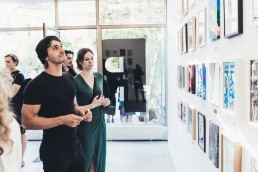
Being based in the heart of Ljubljana, the capital of Slovenia, how do you see the Slovenian art scene and the creative development currently taking form in the region?
I feel there’s a strong need to present emerging contemporary art, which appears in this country mainly due to the quality of its production and the limited possibilities of its presentation. We have a good education system; the contemporary art scene is highly active, with artists socializing, supporting and encouraging one another, networking amongst themselves, etc. The development of creativity is at its peak. Unfortunately, though, we lack mechanisms that support artists’ work, quality production spaces, and channels through which they could promote themselves. Slovenia remains in a kind of vacuum of transition between the old and new system (former socialistic Yugoslavia and present-day independent Slovenia). A large part of tackling the problem has to be approached systemically, judicially, wholesomely… However, I fear there’s not sufficient interest, knowledge or will to do so. I cannot change the world, but I can influence my micro-environment and hope that this environment in turn has a changing effect on other regions and communities. There’s a need for powerful ambassadors of change in all areas, as our artistic domain, which is primarily intended for the production and presentation of art, faces great difficulties in its development and won’t be able to advance without significant financial backing. Nothing changes overnight. What we really need is time and patience.
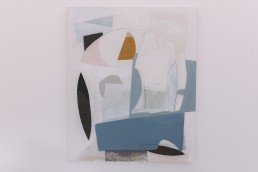
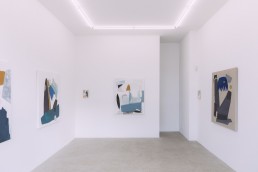
RAVNIKAR GALLERY SPACE was founded in 2017. As a young gallery, do you experience any particular opportunities or challenges in a, at times, stuffy industry?
It’s very simple when looking at it through the prism of local context: if there are no private galleries dedicated to new and emerging production, the art market will remain non-existent. Slovenia is a young and small country without critical mass; the market of cultural and creative industries is exceptionally small, but the most important thing which we lack is not having a strong tradition of investing in private art collections. As our “elite” and older generations of collectors simply don’t (yet) invest in emerging artists, my challenge remains: to educate young collectors. Personally, I see the glass as half full. To me, it all has its own magic – to be at the very beginning of this process, to break new ground, and to watch a country of 2 million develop its young art market. There are certain bright exceptions who recognize the importance and responsibility of supporting the field of contemporary art. These are young collectors, intellectuals from various fields, and the most rewarding aspect of it all is to see people without any family tradition become collectors and to invest trust in my work. You could say my gallery is becoming a hub for young Slovene art collectors.
“R space is committed to bringing fresh innovative formats, as expressed by budding art and artistic practices, to the forefront.” The above quote is from a recent interview you did with In Your Pocket. Can you elaborate on your vision to push new frontiers and confront the established notions set by classic art market conventions? Can you give an example of the new formats that have been introduced to your audience?
R space aims to challenge the assumption of what an art gallery is. A strong need is growing to develop a side-story, a story that presents the world of art not only as a classical art market, but also that of new, committed and innovative formats, which actively support, stimulate and promote young and emerging production. Unfortunately, the artistic expression, which is supposed to be a basic condition for an artist to succeed, is increasingly subordinate to other interests, and therefore, it is important for me to promote this world comprised of various visual art languages, styles and contents. The first international edition of the AIR4 exhibition was truly a breath of fresh air. It consisted of 100 emerging as well as established international artists of mixed generations who had created 100 original works of art especially for this occasion. Within the context of this exhibition, these works were then offered at an affordable rate. It was my attempt at trying to encourage the young interested public, as well as those who have never mustered the courage to cross the threshold of a sales gallery, to come and visit. I don’t believe that this kind of annual event lowers the value of artistic works. On the contrary, I believe that someone who will invest 100 EUR in a piece of art for the first time will likely be prepared to invest even more the next time round or buy a more valuable piece by the same artist.
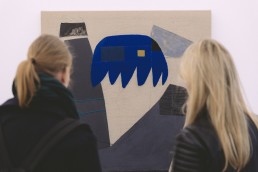
In the same interview, you said that you “are keen to inspire arts and creativity via closer, more meaningful conversations among the artists and the buyers”. Do you feel that there is a lack of meaningful dialogue in the art world? How do you as a gallery initiate closer dialogue between the artists and the buyers?
Slovenes are still shy or even insecure when it comes to visiting art galleries, both public and private ones. The reason for that probably lies in the fact that galleries used to fall under the domain of a select few – the bourgeois elite, if you will. Finally, there’s a wind of change blowing through! Our cultural venues are opening up. They’re becoming more accessible. Educating people and presenting them with the opportunity to discover contemporary production of art has nudged its way into the foreground. This is why I strive to develop programmes to open my spaces to those who are interested in art and appreciate its worth. Dialogue is only possible when you have at least two participating sides – the artist and the public. My main mission is therefore to ensure the existence of this dialogue, so that the public (professional and general) that is introduced to art is as wide as possible. It’s the foundation, the very basics of it all!
"Finally, there’s a wind of change blowing through! Our cultural venues are opening up. They’re becoming more accessible"
Digitization has widely changed and revitalized the world, including the art world where more and more digital platforms arise, thus creating new ways for artists, collectors and gallerists to navigate the art scene. How does digitalization affect the dynamic of your business?
In a local space, where visitors can reach you physically, digital communication of exhibitions and projects is of paramount importance and allows the interested public to visit offline spaces. The main channels are Facebook, Instagram and Vimeo. For sales abroad, a horizontal digital network, support and accessibility are crucial. And it goes without saying that a great role in this important initiative is also played by you, Artland.
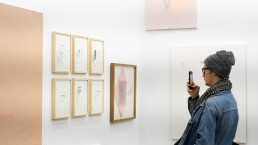
What are the biggest changes you think we will see in the art market in the next 5 years?
Social media networks have a significant effect on the global market, which is why I’m sure technology will continue to play an important role in the design of art and the way it’s sold. I imagine that digital innovation will remain in the forefront; digital gadgetry will advance even further. However, I think physical spaces won’t disappoint either. Just the opposite – these spaces will carry even greater importance, for art is a comprehensive experience. I’m certain there will be ever-younger collectors on the scene, while the art market will expand onto other regions, especially towards the East, which has been a grey zone in the past.
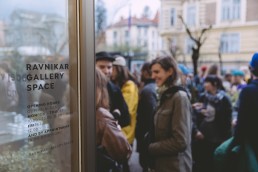
How would you like to see RAVNIKAR GALLERY SPACE develop in the future?
My aim is to actively support and present contemporary art for the sake of art itself, not because of its market value. I’m looking forward to an age when we as individuals will mature and become more responsible toward today’s society and responsible in terms of making big and small decisions that life throws at us. When we purchase a piece of art, we don’t merely become owners of an original that has exceptional worth; we become active supporters of the artistic production of every single artist currently out there. Investing in art is truly an honourable tribute to the cause.
Gallery
RAVNIKAR GALLERY SPACE
Opening year
2017
Opening Times
Mon – Thu 4 – 7pm
FRri 12am – 3pm and by appointment
Address
Prešernova cesta 10a
SI-1000, Ljubljana
Contact
info@ravnikargallery.space
+386 40 846 069